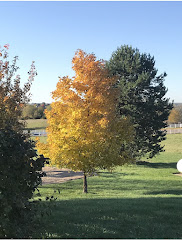TURKEY, TURNING LEAVES, TARGETS and TANK PUMPING!

In our family, the fall is the "most wonderful time of the year." After working out in the hot sun all summer, fall breezes are particularly delightful. But fall also comes with rifle season, campfires, turning leaves and Thanksgiving -- all of which are highly anticipated in this home. You might even say we have unintentionally created our very own holiday with the on-set of deer season. We take hunting very seriously...and I have the hanging heads of dead deer to prove it -- much to my home-decorating-agony! What a world this family enjoys...pumping poop and hanging dead deer carcass on the wall! Aren't you jealous? But I digress... What do these changing season mean to you as a septic living homeowner? Honestly? Not much! We still continue to pumping septic systems all year long. Our only issue comes with the weather and being able to access the tank. If you are a homeowner who lives on septic, your tank is likely in the back yard or ...








